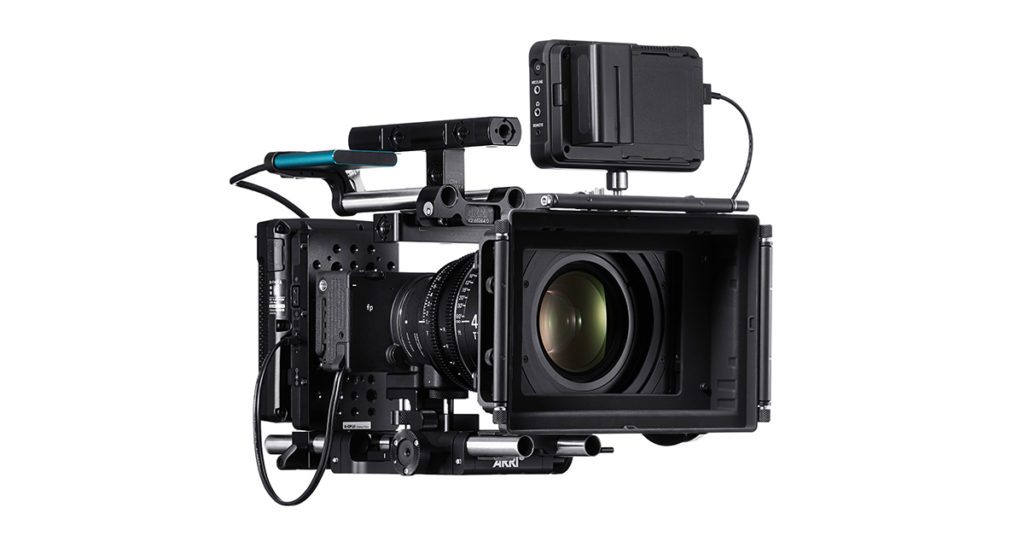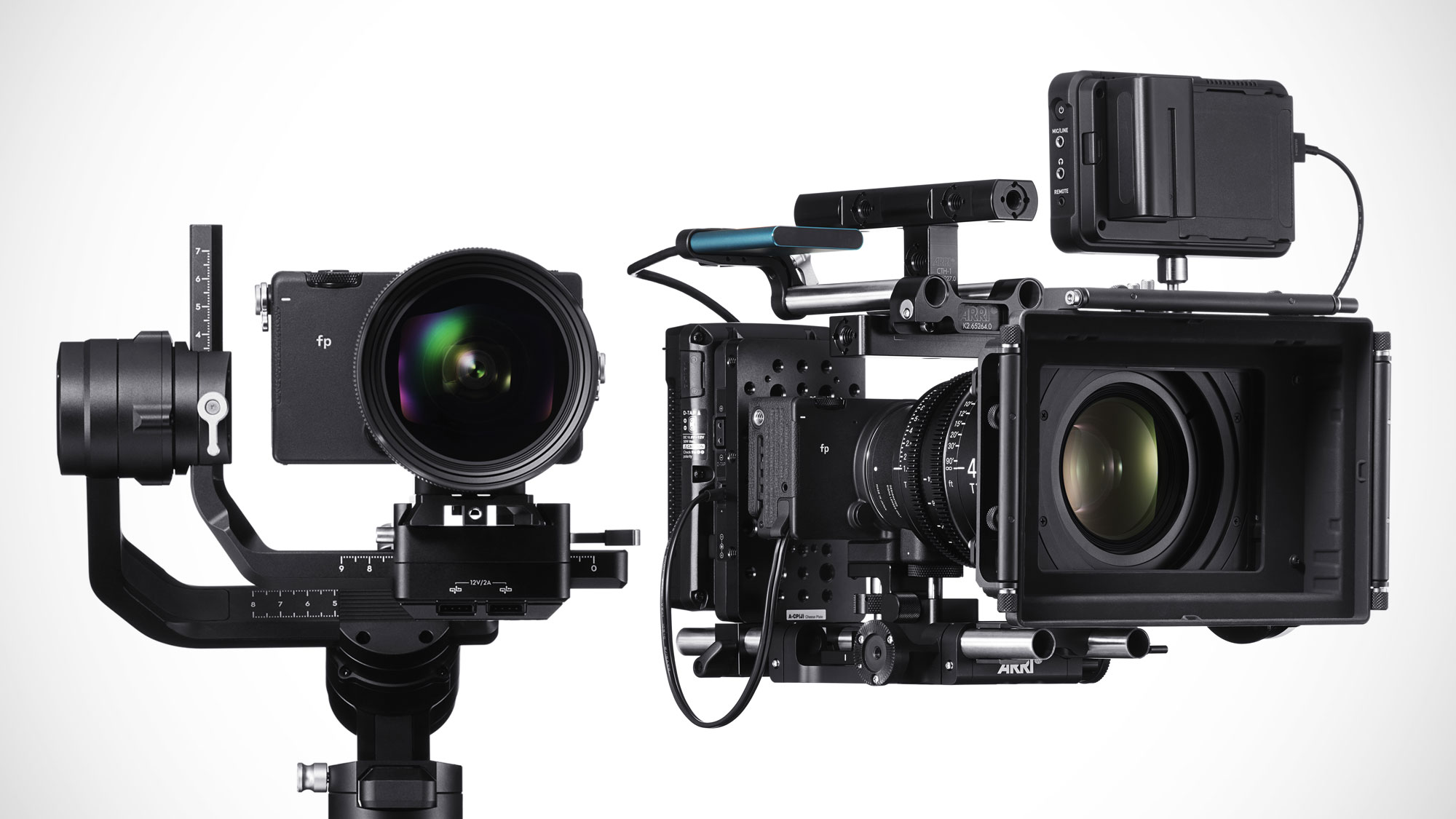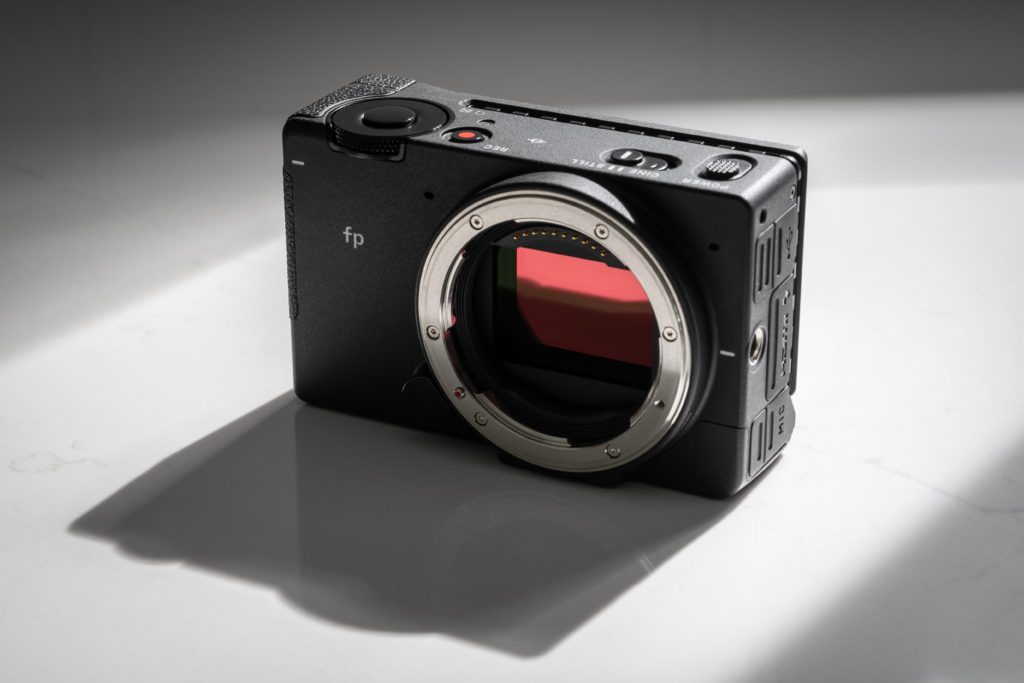See full video below
Small video cameras have been around forever. In fact, most filmmakers working today started on mini-DV cameras that could fit in your hand. There were point-and-shoot cameras using SD cards that could capture decent video 10 years ago, and there have been small, simple-to-use 16mm film cameras for much longer than that.
But in the past couple years, many of the biggest camera brands, including Blackmagic, Sigma, Panasonic and now Red have released very compact, mirrorless style cinema cameras. Most of these shoot Raw video, have a couple customizable dials, have small but interchangeable batteries, and share lens mounts with mirrorless stills cameras that allows them to be even smaller.
Today I’d like to investigate why these mini cameras have exploded in popularity and what’s driving their use on more and more projects and film sets.
Since the first pro level digital cameras that came on the scene 12 years ago, with the RED one and the Arri Alexa, most cinema cameras have tried to emulate the form factor and size of the 35mm cameras they sought to replace. This was because film crews and operators were used to this size, and accessories like 15mm rails and other grip were built around the roughly “loaf of bread” size camera body.
Another advantage was the larger size allowed the electronics the camera to remain cool and not need to be miniaturized.
Then along came the Canon 5D Mark II and the DLSR revolution that followed its release. Rather than replace high-end digital cinema cameras, the DSLRs with their comparatively low costs, interchangeable lenses and affordable accessories allowed people who had previously been shooting on camcorders to create much higher quality visuals for around the same price point.
The DSLR revolution resulted in camera manufacturers creating more affordable cinema cameras, with some excellent sub $10k and even $5k models that came very close in image quality to the $50k+ industry standards, while leaving off features like timecode jamming and multiple SDI outputs that most owner operators could live without.
The first mini camera arose from the need for B cameras to film a main cinema camera shoot. This could be a smaller camera that could be drone or gimbal mounted, and yet shoot in the same format, and with similar quality compared to the A camera it was working with. This meant they could be cut together in post, and share lenses from the same lens package.
These cameras had less options and less features than fully-featured cinema cameras, but they were cheaper. Most were less than half the price of the A cameras they were paired with. To get the price down, some manufactures cut costs with materials, using plastics instead of metals, and left out some critical features so that these cheaper cameras wouldn’t compete with the higher priced cams. Alexa released their Alexa Mini in 2015, and quickly found it outsold the most expensive and fully-featured alternatives.
Most people buying the new mini cams weren’t using them as B cameras, but as A cameras, and finding ways to work around the limitations. For a lot of people, these were the first cinema cameras they could afford and let them produce images far better than DSLRs that shot in compressed, 420 color space.
Through forums like YouTube, people worked out how to get the most out of these cameras, and third party manufacturers created accessories like cages and batteries. The popularity brought even more companies into the market, some of which, like Sigma, didn’t have higher-end cinema cameras they wanted to protect. They offered more features that hadn’t been seen in mini cinema cameras up to that point, such as Raw video, high frame rates and dual ISO capabilities.
Because of their small size and weight, mini cinema cameras are able to do several things that full frame cinema cameras struggle with, and have enabled filmmakers to capture images easier and quicker than with their full-size alternatives.

Sigma released the its own mini cam, the SIGMA fp in 2019, and made a big splash into the mini cam market. Less than half the size of other mini cameras, but featuring Raw capability and a full-frame sensor not found on any other cinema camera under $15k, mini or otherwise, the fp also had outstanding battery life and could even shoot impressive stills. Furthermore, the mirrorless L-mount could easily be adapted to the popular EF or PL mounts, as well as native Sigma glass. The fp quickly gained popularity in the indie film industry and further pushed the envelope for low cost and impressive features.
Gimbal Use
Mini-cameras like the Sigma fp are easier and quicker to rig, lighter to carry and quicker to move than full frame cameras. Weighing less than a pound, the Sigma fp can fit almost every gimbal and yet still capture a full frame image, giving a wide field of view and making shots seem even smoother. Because the motors in even smaller gimbals like the Ronin-S and Weebil don’t have to work as hard to balance a lot of weight, the gimbal doesn’t need to be balanced as precisely, which cuts down setup time, and can be moved at faster speeds while still remaining stable.

Car Mounting
With less weight, mini cameras can be mounted to the inside, and even the outside of cars, with just one suction cup. This eliminates costly and time-consuming rigging that eats up shooting time and can damage the car being shot in. A small camera, especially when combined with a small stills lens, can be held in place by a single suction cup and can capture images from new angles.
Overhead Shots
Overhead rigging of large cinema cameras can be a complicated undertaking. You need a special tripod, or a high-capacity boom arm and a team of grips. A mini camera, on the other hand, can be attached to the end of a c-stand or standard grip arm with the 1/4″-20 mount build into its body without any fear that the weight will bend the arm or damage the camera. As such, filmmakers can achieve all kinds of amazing shots as a one-person crew. The only limitation is the height of the stand and the length of the arm.
Overall, it looks like mini cinema cameras are here to stay, capturing amazing shots and working their way into even high-end cinema workflows.


